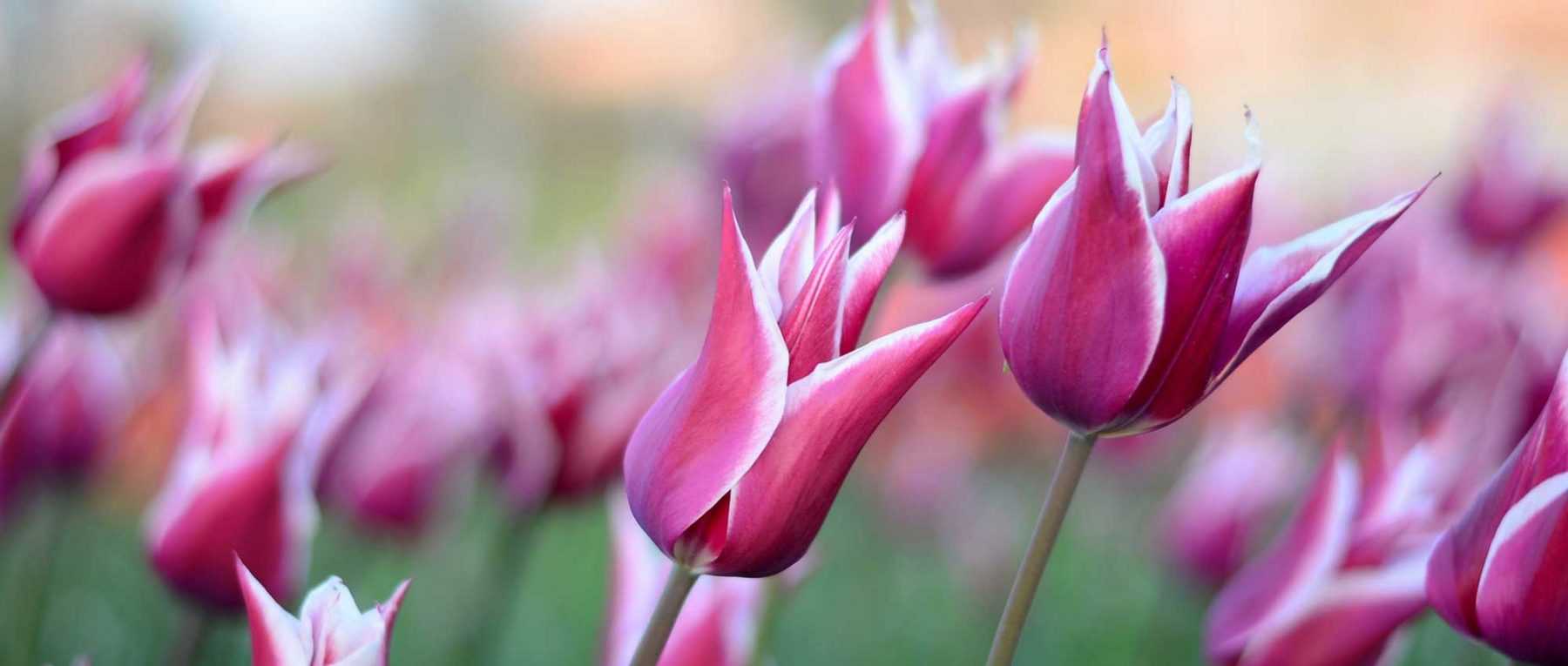
Tulips: Planting, Growing and Caring
Contents
Tulips in a nutshell
- Tulips provide colourful blooms throughout spring!
- They come in a wide range of colours
- These bulbs are easy to grow and undemanding
- They thrive in sunny spots with well-drained soil
- Perfect for creating beautiful bouquets
- Some varieties naturalise easily
Our Expert's Word
The tulip is a stunning bulbous plant that brings colour to spring with its bright blooms. This very elegant flower stands tall towards the sky atop a sturdy stem. It captivates us with its simplicity and incredible delicacy. It offers a very wide range of colours: there are black, white, yellow, red, orange, mauve, pink tulips… They can be single-coloured, but also multicoloured, with beautiful patterns. The flowers take on different forms, sometimes simple and cup-shaped, but other times double, or with wavy, fringed petals, like in parrot tulips.
The tulip is an easy-to-grow and undemanding plant. The bulbs are planted in autumn, in sunny spots and in well-draining soil. They dislike excess moisture, which could cause them to rot. You can also grow them in pots and create beautiful compositions by pairing them with other spring bulbs. Botanical tulips are the least demanding. They can grow in rockeries, require little maintenance, and can naturalise!
Botany
Botanical data
- Latin name Tulipa sp.
- Family Liliaceae
- Common name Tulip
- Flowering between March and May
- Height typically between 20 and 60 cm
- Exposure full sun
- Soil type light and well-drained
- Hardiness generally around -15°C
Tulips are spring-flowering bulbous plants comprising nearly 120 species. They have been extensively hybridised, resulting in thousands of varieties with the most diverse hues. Their centre of diversity lies in the steppes of Central Asia, particularly in Tajikistan and Kazakhstan. In France, a few wild species can be found, such as Tulipa sylvestris, agenensis or clusiana. Tulips belong to the Liliaceae family, the lily family, which also includes fritillaries, erythroniums and tricyrtis. Most modern varieties originate from Tulipa x gesneriana. Cultivated tulips are classified into fifteen groups based on their characteristics (single early, double early, triumph tulips, lily-flowered, etc.)
Most tulips grow between 20 and 60 centimetres tall. However, there are some exceptions, with tulips reaching 70-80 cm in height, while others are very low-growing, with flowers almost at ground level, like the Tulipa humilis ‘Tête à Tête’, which grows between 6 and 10 cm tall. Botanical tulips are often smaller than horticultural varieties.
Tulips typically produce a long, upright stem bearing a single large flower at its tip. However, there are also multiflowering tulips with several blooms per stem, such as Tulipa praestans, and especially the Tulipa turkestanica, where each stem carries between five and twelve flowers.
Depending on the variety, tulips flower between March and May, with some late varieties blooming until June. The earliest bloomers are botanical tulips, kaufmanniana tulips, and fosteriana tulips. The latest varieties (around May) include parrot tulips, viridiflora tulips, fringed tulips, lily-flowered tulips… As for triumph tulips, they are mid-season varieties, flowering in mid-spring.
Tulip flowers face upwards. In botanical species and most varieties, the flowers have three sepals and three petals. These six floral parts are usually the same colour and appearance, giving the impression of six coloured petals. They are also called tepals. At the flower’s centre are six stamens.
Tulips have been extensively hybridised, and instead of always having single flowers, some varieties now have double or even very double flowers, depending on petal count. This is the case with peony-flowered tulips. Generally, these extra petals result from stamens transforming into petals. The flowers can take various shapes: cup-shaped, goblet-shaped, oval, star-shaped… They can be very open, revealing the flower’s centre, sometimes in a contrasting colour, or remain more closed. They have evolved so much that they sometimes resemble rose or peony flowers more than tulips! Parrot tulips stand out with their irregular, curled petals… giving the flower more volume. Triumph tulips have a classic yet imposing look, with slightly squarer flowers than other varieties.
Tulips offer a wide colour palette: they can be red, pink, white, golden yellow, purple-mauve, sometimes very dark, almost black, like the ‘Black Hero’ tulip. Flowers are often single-coloured but can also be multicoloured. Rembrandt tulips are striking as they combine several vibrant colours with a flamed appearance. Their patterns give the impression of being painted. Originally, these colours resulted from a virus, but today’s Rembrandt tulips are perfectly healthy. Viridiflora tulips have petals marked with green on the outside, making the flower even more delicate.
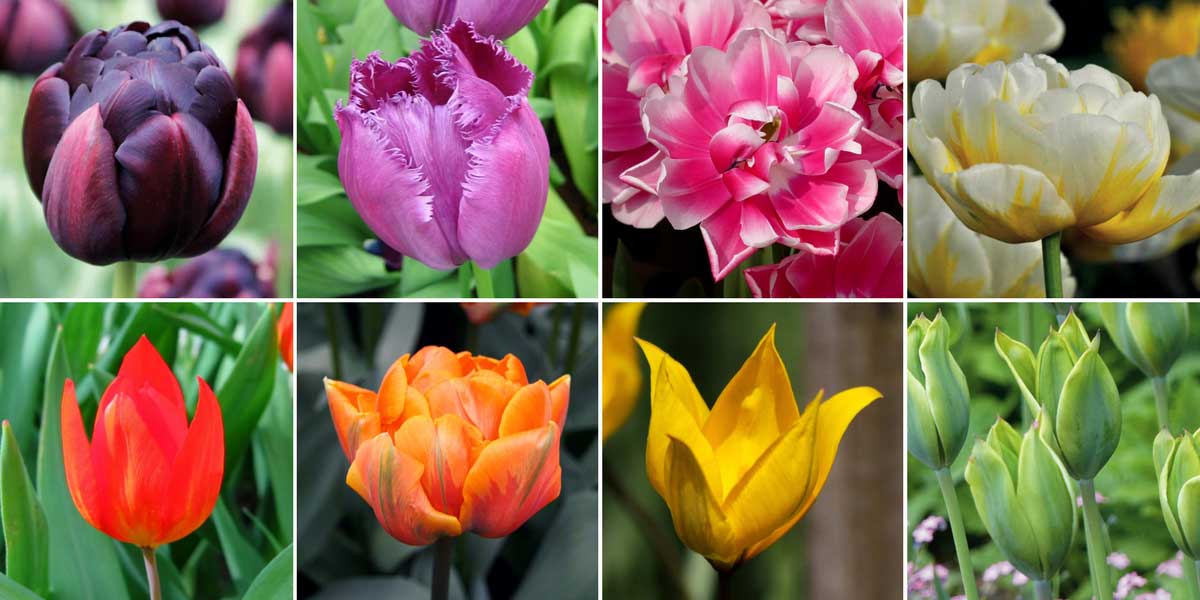

The different colours of tulip flowers, in order: ‘Black Hero’ / ‘Curly Sue’ / ‘Columbus’ / ‘Flaming Evita’ / Tulipa praestans ‘Fusillier’ (photo: Leo Seta) / ‘Orange Princess’ / Tulipa sylvestris (photo: Björn S.) / ‘Evergreen’
Petals can be slender and pointed. This is typical of lily-flowered tulips, giving them a very refined look. The Tulipa acuminata is impressive with its extremely slender petals! Other times, petals are rounder and coarser, like classic Triumph tulips. They can also be fringed, with a laciniate edge. This creates exceptionally fine blooms, with petal edges resembling lace. Botanical tulips generally have more slender and delicate petals than horticultural varieties.


Tulip flowers can take very diverse forms: Tulipa sylvestris (photo: Vadyum Manyuk) / lily-flowered tulip ‘Ballerina’ / parrot tulip ‘Flaming Parrot’ / Tulipa acuminata / double early tulip ‘Brownie’ (photo: Liz Every – GAP)
Tulips have elongated, pointed and rather thick leaves. Their edges are sometimes wavy. They are arranged alternately on the stems. They can be striped… For example, Greigii tulips and kaufmanniana tulips often have leaves marked with purple streaks.
Tulips grow from bulbs, which serve as storage organs. They allow the plant to store nutrients to survive the off-season and reflower in spring. Bulb size influences flowering: larger bulbs generally produce bigger flowers. We recommend choosing bulbs with a minimum size of 12. Botanical tulips often have smaller bulbs than horticultural varieties.
The tulip’s fruit is an elongated capsule that splits into three parts when ripe to release numerous flat, brown seeds.
Botanical tulips:
Most horticultural tulips originate from Tulipa gesneriana. This species has been hybridised for centuries, resulting in today’s profusion of varieties with impressive large, colourful flowers. Botanical tulips are those not descended from Tulipa gesneriana. They are wild species or varieties that remain very close to them, being minimally hybridised. They are less dependent on human care for their survival. Thus, they require less maintenance, can fend for themselves and return year after year. They naturalise easily. They also offer more delicate, finer flowers…

Tulipa bakeri Lilac Wonder
- Flowering time May
- Height at maturity 15 cm
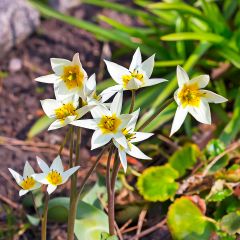
Tulipa turkestanica - Botanical Tulip
- Flowering time April, May
- Height at maturity 15 cm
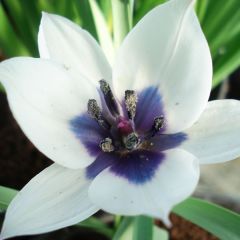
Tulipa Albocaerula Oculata Group
- Flowering time April
- Height at maturity 10 cm

Tulipa humilis var. pulchella
- Flowering time April
- Height at maturity 15 cm

Tulipa orphanidea 'Flava'
- Flowering time May
- Height at maturity 20 cm
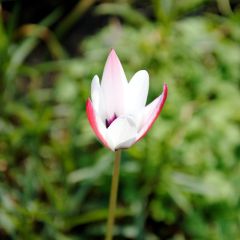
Tulipa clusiana 'Peppermintstick'
- Flowering time April, May
- Height at maturity 20 cm

Tulipa acuminata
- Flowering time June, July
- Height at maturity 40 cm
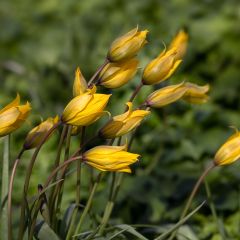
Tulipa sylvestris - Botanical Tulip
- Flowering time April, May
- Height at maturity 12 cm
Read also
Getting my tulips to bloom againThe main varieties of tulips
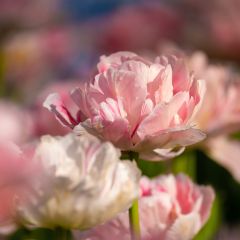
Tulipa Angélique - Double Late Tulip
- Flowering time May, June
- Height at maturity 40 cm

Tulipa Orange Princess - Double Late Tulip
- Flowering time May, June
- Height at maturity 35 cm

Tulipa fosteriana Purissima
- Flowering time April, May
- Height at maturity 40 cm
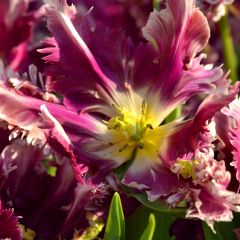
Tulipa Mysterious Parrot - Parrot Tulip
- Flowering time May, June
- Height at maturity 45 cm
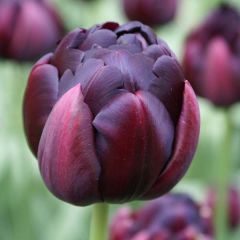
Tulipa Black Hero - Double Late Tulip
- Flowering time May, June
- Height at maturity 50 cm
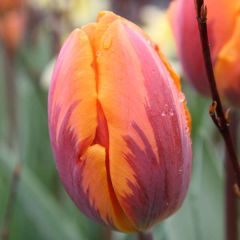
Tulipa Triumph Princesse Irene
- Flowering time May, June
- Height at maturity 35 cm

Tulipa Negrita - Triumph Tulip
- Flowering time May, June
- Height at maturity 45 cm

Tulipa Queen of the Night - Early simple Tulip
- Flowering time May, June
- Height at maturity 60 cm

Tulipa Ballerina - Lily flowering Tulip
- Flowering time June
- Height at maturity 50 cm
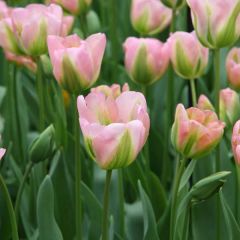
Tulipa viridiflora Greenland
- Flowering time May, June
- Height at maturity 45 cm
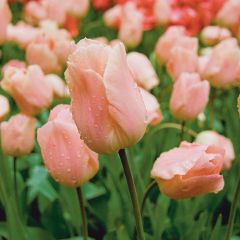
Tulipa Apricot Beauty
- Flowering time April, May
- Height at maturity 40 cm
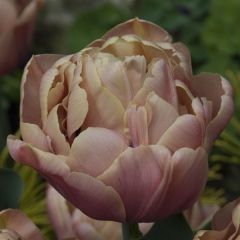
Tulipa La Belle Époque- Double Early Tulip
- Flowering time May, June
- Height at maturity 35 cm
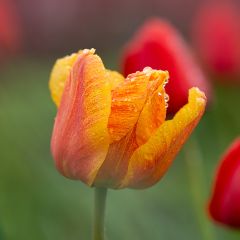
Tulipa Cairo
- Flowering time May, June
- Height at maturity 50 cm
Discover other Botanical Tulips
Planting
Where to plant?
Tulips thrive in sunny spots. They can tolerate partial shade, but good light exposure is essential to ensure proper flowering. Preferably plant them in a sheltered position, protected from wind, especially for the taller varieties.
Plant your tulips in light, well-draining soil. They dislike waterlogged conditions, which can cause the bulbs to rot. If your soil is heavy, add a layer of gravel or coarse sand at the bottom of each planting hole to improve drainage. Tulips, however, appreciate rich, fertile soil. If your soil is poor, it’s best to enrich it with compost. They are not particularly sensitive to pH levels.
You can grow tulips in pots and place them on your terrace or windowsill. Pair them with other spring bulbs (daffodils, muscari, hyacinths…) and layer the bulbs by planting them at different depths. As they love sun and well-drained soil, some tulips will thrive particularly well in rock gardens! This is true for most botanical tulips (Tulipa humilis, Tulipa polychroma, Tulipa turkestanica…).
Botanical tulips are the easiest to grow. They are less demanding and can adapt to a wider range of conditions compared to cultivated tulips. They will therefore tolerate shade, heavy soil, or dry, poor soil more easily.
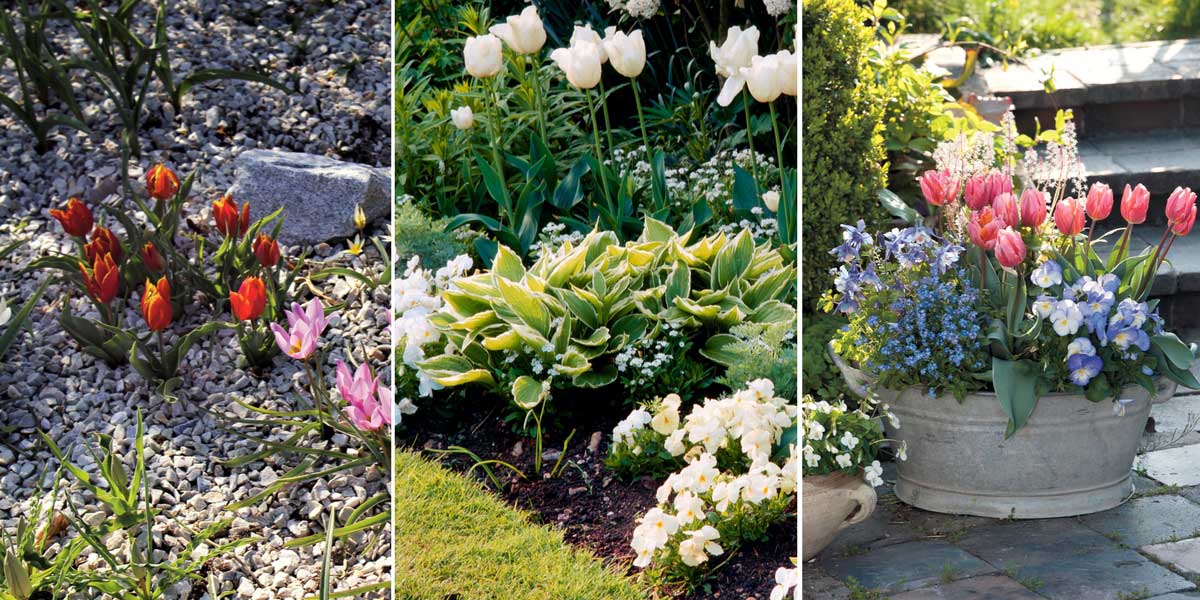

Botanical tulips adapt well to rock gardens. / Cultivated varieties are perfect for borders (photo MAP – Clive Nichols) / You can also grow them in pots (photo: Friedrich Strauss – Biosphoto)
When to plant?
Tulip bulbs should be planted in autumn, preferably between October and November. A bit earlier (in September) if you live in a region with harsh winters. You can also plant them later, in December or even January, but flowering may be less abundant and delayed by a few weeks.
You can also check out our guide – Planting spring bulbs late
How to plant?
We recommend planting bulbs in groups rather than individually. Space them about 10 cm apart.
Before planting, check the condition of your bulbs: they should be healthy, firm, and free from deep mould marks. You can wipe off superficial mould with a cloth, but if it doesn’t come off, avoid planting the bulb—it may fail to grow and infect others.
- Place your bulbs. You can scatter them randomly for a natural effect.
- Dig a planting hole for each bulb, about 12 to 15 cm deep. Botanical tulips should be planted slightly shallower, but as a rule, the bulb should be buried at twice its height. You can use a bulb planter.
- If your soil is heavy or clayey, add a thin layer of drainage (gravel, coarse sand…) at the bottom of the hole.
- Place the bulb the right way up, with the pointed end facing upwards.
- Cover with soil and firm gently.
- Water lightly.
You can add a layer of mulch to retain soil moisture, suppress weeds, and protect the bulbs from frost.
Watch our video guide: Planting tulip bulbs
Maintenance
Generally, tulips can do without watering, especially if grown in open ground (in pots, the substrate dries out faster!). Water them mainly during spring droughts. Right after flowering, the bulb replenishes its reserves: we therefore recommend adding a little fertiliser and watering lightly at this time. Also remove faded flowers to avoid unnecessarily exhausting the plant. Then, when the leaves start to dry out, you should stop watering, otherwise the bulb may rot.
Do not cut the leaves before they are completely dry. Let them yellow and dry naturally. After flowering, the foliage allows the bulb to replenish its reserves for a good bloom the following spring. Be careful if you have planted them in a lawn: you will need to wait until the foliage is dry before mowing.
It is customary to dig up horticultural variety bulbs in summer, once the foliage has dried, to store them in a dark, dry place, and replant the finest ones in autumn. However, nowadays we rather recommend leaving them in place, especially if your soil is well-draining. Whether you dig them up or not, horticultural tulip bulbs will deteriorate after a few years. In any case, there is no need to dig up botanical tulip bulbs, as they are self-sufficient plants that last a long time and can naturalise!
Tulips can do without fertiliser, as their bulb contains nutrient reserves. But you can also choose to add fertiliser to encourage beautiful flowering, especially if your soil is poor. In all cases, prefer a fertiliser with a low nitrogen content.
Tulip bulbs are appreciated by rodents (voles, mice…)! To keep them away, you can plant repellent plants near your tulips: fritillaries, spurge, incarvillea… or surround the bulbs with wire mesh when planting. Squirrels may also dig them up. Finally, if you live in the countryside near a forest, wild boars may come to plough, dig up and eat the bulbs.
Discover Virginie’s tips for protecting bulbs from rodents!
Tulips can be affected by “Tulip Fire” (Botrytis tulipae), a fungal disease that causes grey spots to appear on leaves and flowers, and sometimes foliage deformation. As soon as you notice this disease, remove affected plants and avoid replanting tulips in the same spot. Tulips may also be attacked by aphids, bulb mites or nematodes.
Also discover our tips for getting tulips to rebloom.
Propagation
Tulips multiply through bulb division. Do this when the plant is dormant, once the foliage has turned yellow. We recommend dividing your tulips every three or four years.
- Dig up the bulbs. Make sure to dig wide enough to avoid damaging them.
- Gently separate the new bulbs that have developed around the original bulb. Check that they are healthy, firm, and free from signs of disease.
- Choose a suitable location, in full sun and well-draining soil.
- Dig holes 10 to 15 centimetres deep and place the new bulbs.
- Cover them with soil, firm down, and water.
To encourage bulb growth, prevent flowering in the first year by cutting the flower stem. This allows the bulb to grow larger, build up reserves, and produce more beautiful blooms in the future.
→ Also discover how to propagate bulbs by scaling in our tutorial!
Association
Tulips come in a wide range of colours and shapes… Don’t hesitate to mix different varieties! You can create harmonious displays by using varieties in similar tones… or striking contrasts! Discover our collections, which offer splendid pairings of different varieties.
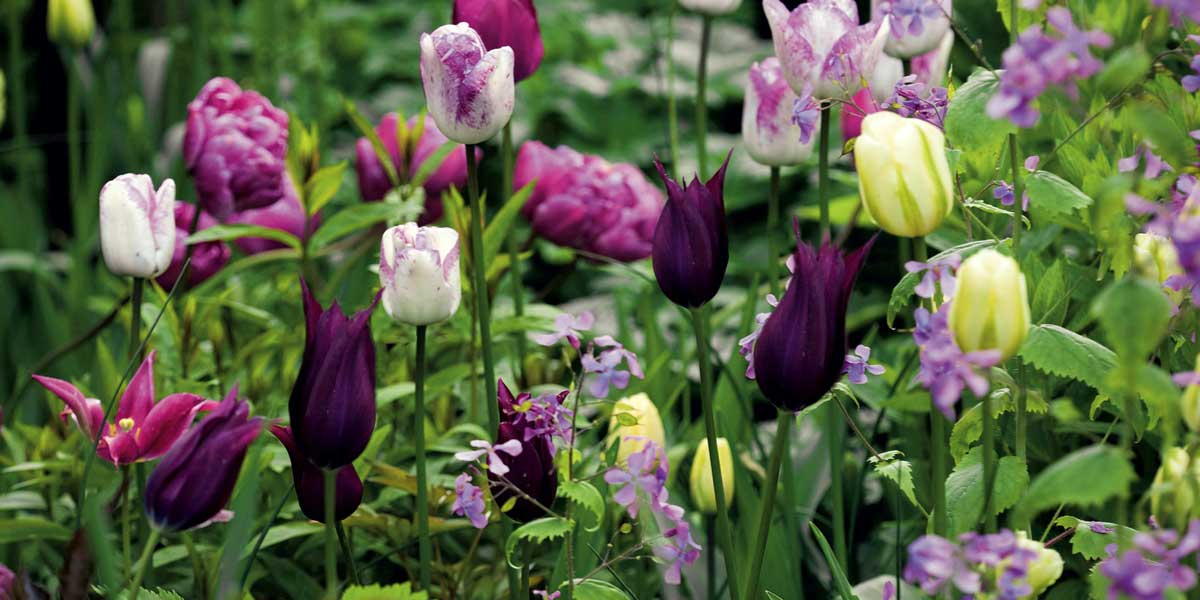

Our bucolic collection combines the tulips ‘Burgundy’, ‘Spring Green’, ‘Blue Diamond’ and ‘Shirley’ (photo: Pernilla Bergdahl – GAP Photos)
Create a vibrant, colourful flowerbed by pairing garden tulips with spring-flowering perennials. The perennials will help conceal the tulips as they finish their growing cycle, hiding their yellowing foliage… You can plant them alongside hardy geraniums, bleeding hearts, hostas, or pansies.


In a flowerbed, you can pair the tulips ‘Hibernia’ with pansies ‘Matrix White’ and hostas ‘Silver Crown’ (photo: Clive Nichols – MAP)
Tulips pair beautifully with other spring-flowering bulbs, such as grape hyacinths, hyacinths, daffodils, fritillaries or crocuses… You can also enjoy the delicate blue or white flowers of spring starflowers.
Some tulips can be planted in rock gardens! Preferably choose botanical tulips, such as the red-and-yellow Tulipa schrenkii, the delicate little Tulipa humilis, the white-and-yellow Tulipa polychroma, or the multi-flowered Tulipa turkestanica. Plant them alongside other drought-tolerant plants.
Don’t hesitate to play with colours… And create a striking flowerbed, for example by pairing black tulips (like Tulipa ‘Queen of Night’) with white tulips (like Tulipa ‘White Triumphator’). You can also create a harmonious scene by designing a flowerbed in warm tones, with carex, heucheras, wallflowers and Euphorbia griffithii.
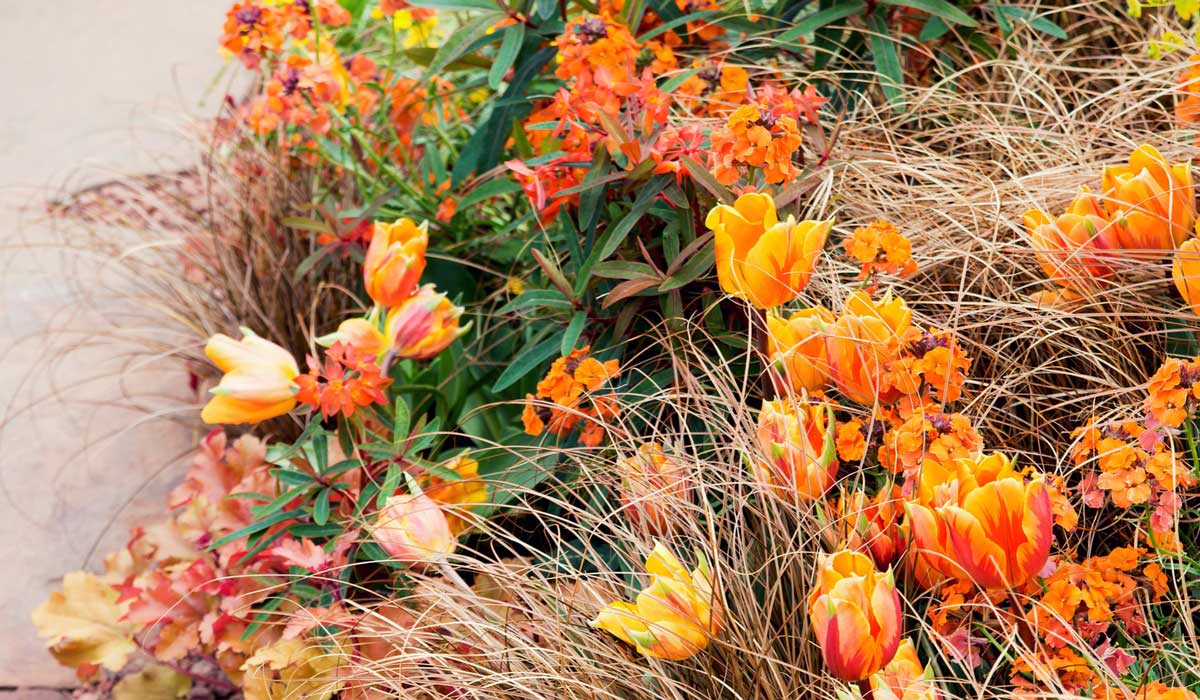

Create a warm-toned scene by pairing the tulip ‘Irene’ with Carex ‘Chocolate’, Heuchera ‘Marmalade’, Erysimum ‘Poem Mandarin’ and Euphorbia griffithii ‘Dixter’ (photo: GAP – Heather Edwards – Design Gary Bristow)
Grow your tulips in pots and create a stunning spring display in deep blue tones, for example by planting the tulip ‘Queen of Night’ with grape hyacinths and pansies.
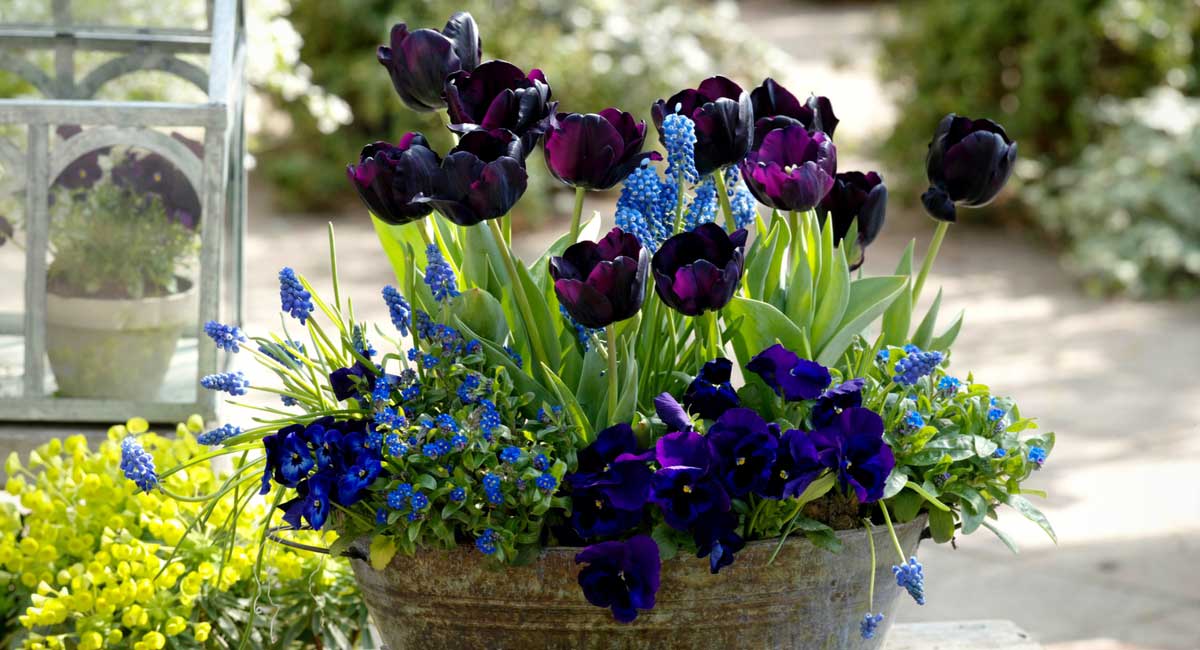

You can create a striking deep blue display by pairing the tulip ‘Queen of Night’ with grape hyacinths and pansies (photo: Friedrich Strauss – Biosphoto)
Botanical tulips fit perfectly into a naturalistic garden, paired with other small spring bulbs (grape hyacinths, fritillaries…), or early-flowering perennials. You can combine them with forget-me-nots, honesty (Lunaria), ornamental grasses, and especially the blue flowers of English bluebells (Hyacinthoides non-scripta)! Similarly, for a very natural look, feel free to scatter tulip bulbs across your lawn.
Did you know?
- Tulip Mania
In 17th century Holland, a true craze for tulips developed. The price of tulip bulbs literally skyrocketed… a single bulb reached a value fifteen times the annual salary of a craftsman! Some people pooled their resources to buy a share in a single bulb. Then the market collapsed, leading to the ruin of many speculators. This event is sometimes referred to as the “first speculative bubble” in history.
- Keukenhof Gardens
In Holland, the Keukenhof flower park displays an exceptional collection of tulips and spring plants, with over 7 million bulbs in total. Discover Pierre’s article on our blog.
Useful resources
- Discover our wide range of tulips!
- Our Spring Bulbs Planting Depth Guide
- Our video tips – Planting Tulip Bulbs
- Advice sheet – Getting My Tulips to Bloom Again
- Advice sheet – How to Protect Bulbs from Rodents
- Advice sheet – Late Planting of Spring Bulbs
- Advice sheet – Tulips: What to Do After Flowering?
- Advice sheet – Diseases and Pests of Tulips
- A blog post by Pascal – How to Fail at Growing Tulips in 5 Lessons
- A post by Pierre – Tulips: How to Choose Them Well in 3 Points
- Advice sheet: Which Bulbs to Grow Indoors?
- Advice sheet: Bulb Sizing: Understanding for Better Choices
- Advice sheet: 6 Bulbs to Naturalise in the Garden
- Article: Keukenhof: The Flower Bulb Paradise
- Advice sheet: Tulips by Flowering Period
- Article: A Tulip Bouquet for €1!
- Our advice sheets on different tulip types: Parrot Tulips, Lily-Flowered Tulips, Double Late Tulips, Fringed Tulips: A Garden Jewel, Viridiflora Tulips: The Most Popular, 9 Variegated Foliage Tulips
- Our advice sheets by tulip colour: 7 Yellow Tulips, 7 Red Tulips, 7 Pink Tulips, 7 White Tulips, 6 Purple, Mauve or Deep Red Tulips
- Discover the story of Tulip Mania on our blog with Gwenaëlle
- Our 2023 Tulip New Varieties!
Frequently asked questions
-
Should I remove the bulbs after flowering?
Traditionally, it was customary to lift the bulbs once the foliage had yellowed, in order to store them dry and replant the finest specimens in autumn. This practice is justified for double-flowered and parrot varieties, but it isn't essential for traditional garden tulips and is unnecessary for botanical tulips. These thrive in the garden and return year after year without requiring intervention. If you do dig up garden tulip bulbs, clean them to remove soil, trim away foliage and roots, allow them to dry, then store in a dry, dark and well-ventilated place.
-
My bulbs aren't growing, I can't find them.
Rodents (particularly voles and mice) are particularly fond of tulip bulbs, so there's a good chance they may have eaten them! Discover Virginie's tips for protecting bulbs from rodents. https://www.promessedefleurs.com/conseil-plantes-jardin/ficheconseil/comment-proteger-les-bulbes-des-rongeurs/ Alternatively, if your soil is heavy or you didn’t sort them before planting, some bulbs may have rotted due to excess moisture or mould growth. Tulips need to be grown in well-draining soil!
-
The flowering of my tulips is dwindling over time. What should I do?
We recommend dividing them. You can also add some fertiliser. Otherwise, it depends on the type of tulips you're growing, but while botanical tulips are perennial, this isn't the case for horticultural varieties, which need to be renewed after a few years.
-
I forgot to plant my tulip bulbs this autumn... can I plant them late, or should I wait until next autumn?
If you find your bulbs in December or January, it's best to plant them immediately. The flowering will simply be delayed. After March, the results may be quite unpredictable. However, tulips cannot wait a year before being planted... There's no point in storing them for planting the following autumn.
The reasonable planting period also depends on your climate: you can afford to plant them later if you live in the south of France.
- Subscribe!
- Contents
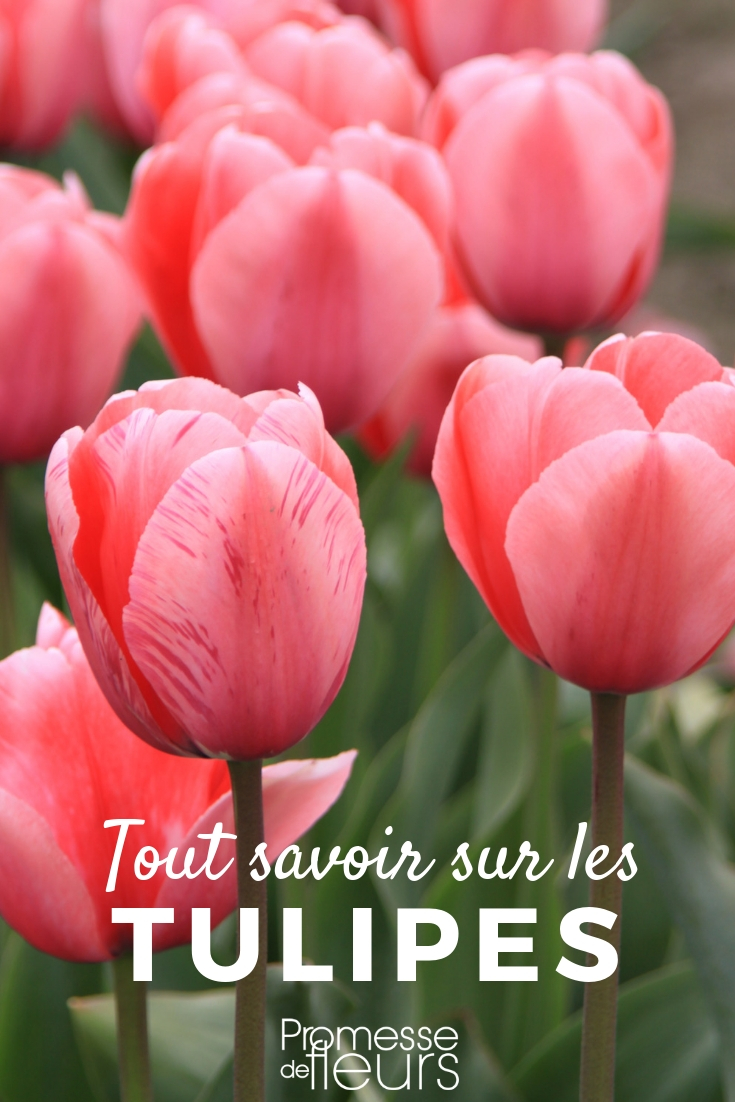



































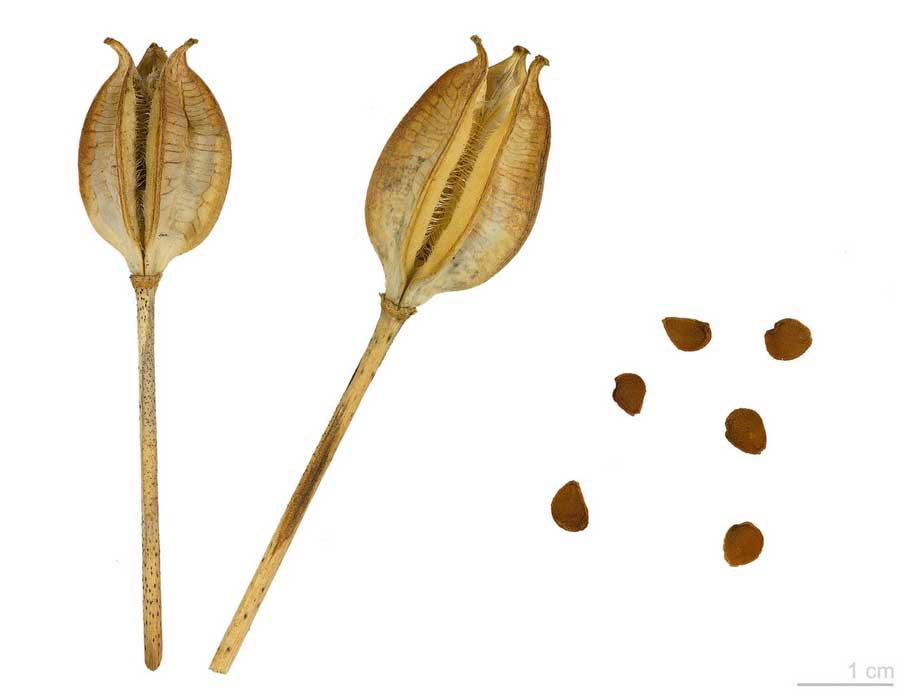
Comments